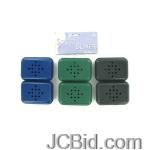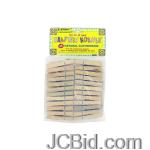
| Updated Blogs |
|
More .....
|
 RSS Feed | Login
RSS Feed | Login You Can do Anything, But Don’t Step On My Red Soledshoes!
Christian Louboutin, Christian Louboutin SAS v Van HarenSchoenen BV (Case C-163/16), opinion delivered by the Advocate General, MaciejSzpunar on 22 June 2017 A recent opinion by the Advocate General (“AG”) in the Court of Justice for the EU (“CJEU”) has highlighted fascinating trademark issues pertaining to the relationship between colour and shape Since 1992, Christian Louboutin, famed Parisian fashion designer of women's footwear and accessories, has painted the "outsoles" of his high-heeled shoes with a high-gloss red lacquer. In 2008, he registered the red sole as a trademark with the US Patent and Trade Office (USPTO), and this ‘Red Sole Trademark’ has been the subject of several legal disputes. More recently, the District Court of the Hague was faced with what has been a long-standing legal battle between Louboutin and Dutch shoemaker Van Haren, with the latest opinion of the Advocate General (AG) at the Court of Justice of the European Union (CJEU) constituting a serious potential loss for Christian Louboutin. But first, some background In 2011, Yves Saint Laurent (YSL), a Paris-based fashion house, released a collection of monochrome footwear in various colours including red. Louboutin filed a trademark infringement lawsuit against YSL, citing trademark infringement and counterfeiting, false designation of origin, unfair competition, and trademark dilution, and seeking a preliminary injunction preventing YSL from any shoe, of any colour, incorporating the ‘Red Sole Trademark’. The court found that the ‘Red Sole Trademark’, as registered, was ineligible for protection, as it would preclude competitors’ use of red soles in all situations, including YSL’s single-colour use. The court also concluded that the ‘Red Sole Trademark’ had acquired a secondary meaning in the marketplace for women’s high-heeled shoes (and thus the “acquired distinctiveness” to merit protection) when used as a red sole that contrasts with the remainder of the shoe. As such, YSL’s single-colour red shoe did not infringe this and the USPTO was ordered to restrict the scope of Louboutin’s Red Sole Trademark accordingly. Since then, there have been several legal battles surrounding this 'Red Sole Trademark' in various jurisdictions. Then, in 2012, Dutch shoemaker Van Haren released its own shoe with a red sole. Louboutin sued Van Haren for trademark infringement, and a Dutch court ruled that the latter should stop manufacturing and selling black and blue shoes with red soles. But, the District Court of The Hague (a Netherlands court), prior to ruling on the issue itself, asked the CJEU for a preliminary ruling as to whether: “The notion of ‘shape’ is limited to the three-dimensional properties of the goods, such as their contours, measurements and volume, or does it include other (non three-dimensional) properties of the goods, [like] colour?” So what has happened now? The CJEU referred the matter to the AG, who – as recently as June 2017 – provided his opinion. He held that Louboutin’s red-soled shoe could not be granted trademark protection because “the presence of a colour applied to an element of the surface of the goods can be regarded as a characteristic reflected in the shape of the goods”; and that “colour can be an essential practical characteristic of certain goods, such that the monopolisation of colour, in relation to an element of the shape of the goods, would remove the freedom of competitors to offer goods incorporating the same functionality" Therefore, the 'Red Sole Trademark' fell foul of article 3 of the EU Directive 2008/95. The rationale for this finding seems to be, in part, to prevent the monopolisation of the colour red and to keep the colour red in the public domain in the context of the fashion industry at least, where colours are key factors used by consumers when purchasing goods. This can be contrasted with a well-known trade mark registration for the colour pink for fiberglass insulation; where colour is not a decisive factor in the purchase of such goods by the average, notional consumer of said goods. The AG has concluded that the Louboutin trademark should be equated as being one that consists part of the shape of the goods, rather than one that consists of a colour mark per se. What is very interesting to be taken from the AG’s opinion is the link that he drew between colour and shape as marks. This link has not, as yet, been explored by any court. If the CJEU accepts the line of argument presented by the AG in this opinion, it would seem that an additional layer of enquiry needs to be addressed for colour per se marks to be registrable; and perhaps for all “non-traditional trademarks”. In this case, despite Louboutin’s complying with the recommendations made in Libertal for the filing and ultimate registrability of a colour per se trademark, the AG looked beyond this and addressed the absolute bars to registration i.e. whether the colour per se as applied to an article (3-D shape) results from the nature of the goods themselves and/or whether the shape gives substantial value to the goods in question. Also, the AG’s opinion shows how closely the four basic requirements for trade mark registrability – a sign must constitute a ‘mark’ and be ‘capable of graphic representation’; the mark must constitute a ‘trade mark’ in that the mark must be used or proposed to be used for the ‘purpose of distinguishing’; “distinctiveness”, whether inherent or acquired; and the absolute (and relative) grounds for refusal or invalidity of a trade mark – interplay with each other. Whilst the South African Trade Marks Act contains a prohibition, in section 10(5), against marks that consist exclusively of a shape which derives from the nature of the goods themselves, there is no specific prohibition – as there is in article 3 of the Directive – against shapes that give substantial value to the goods. In UK and EU law, these two prohibitions are dealt with separately in their legislation: although this does not mean that they are mutually exclusive. Perhaps, the South African courts would read the above prohibition into subsection 10(5) i.e. a mark which consists exclusively of the shape where such results from the nature of the goods themselves, or subsection 10(11) i.e. a mark where the registration thereof is or has become likely to limit the development of any art or industry. From the AG’s opinion and his reference to the context in which the mark finds itself (e.g. the fashion industry), I am inclined to believe that a court in South Africa would derive this line of argument through subsection 10(11) of the South African Trade Marks Act. In this way, the balance between the granting of a monopoly right and the public interest of keeping certain signs free for use by all – which the AG referred to at the beginning of his opinion – can be maintained. As intricate and nuanced as the AG’s opinion is, it is not binding on the CJEU. Therefore, it will be interesting to see if the CJEU comes to the same conclusion. If so, this could be far-reaching, not only for brands, but also for the future of trademark law – with a potentially chilling effect on brand-owners seeking to obtain registration for colour marks per se, or those seeking to rely on ‘acquired distinctiveness through use’ to support their applications for registration of “non-traditional” trademarks. Disclaimer: This article is a general guide to the subject matter contained herein. It may not be suitable to your particular circumstances. Separate legal advice should be sought in every instance where you wish to protect your rights. Please note that, as of 1 September 2017, our offices will be moving to 21 Scott Street, Waverley. We look forward to welcoming you at our new home!
JC Store | JasmineCorp
|
JCBid
|Software
Development |
Domain
Registration | Hosting
| Web
Designing | Buy
Books |
Advertise
with JCSearch |
Whois
|
IP
Locator |
Add
Search |
Shopping
| Store
|
Free Blogs |
Free
GuestBook | Free
E-Cards |
Free
Games |
Free
Tutorials |
Set
as Home | Add
to Favorite
| Suggest
a Site |
Directory
Our Portfolio
| Terms of service
| Free quote
| Tell a Friend
| Special Offer
| Job Opportunities
| games
| Usenet Groups




